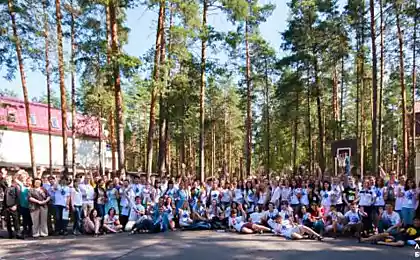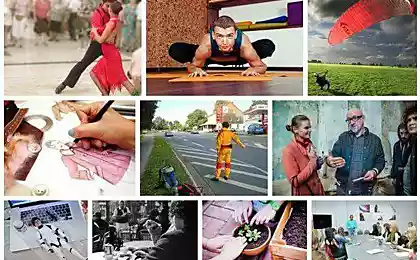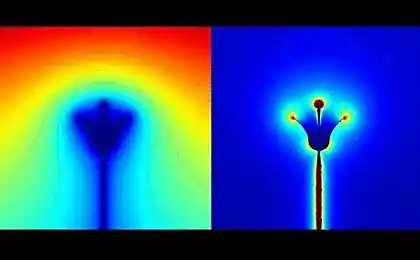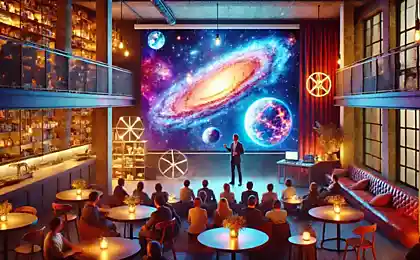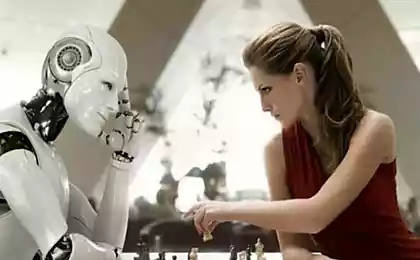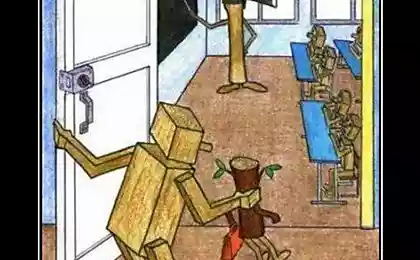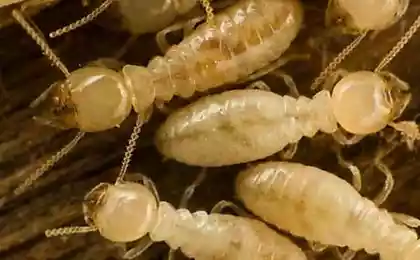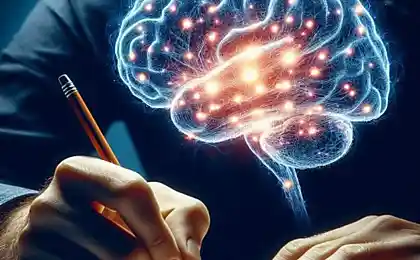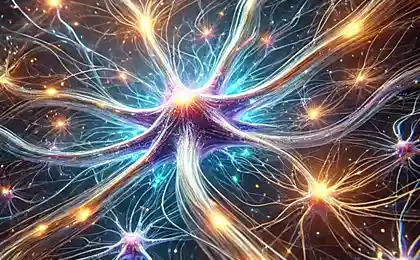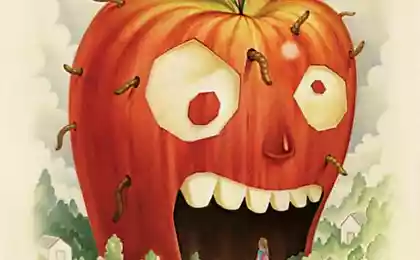599
Normal bumblebees learn new skills by observing the behavior of talented bees

Earth bumblebee (Bombus terrestris)
Social learning — knowledge transfer from the innovator the rest of the population (observers) is common not only among humans but among other animals. As examples of skills wash potatoes and fishing in primates, clearing pine cones in rodents, as well as the opening of milk bottles in birds. Studies have shown that individual skills can be very widely spread in the animal population living in a large area. None of the animals could not remember how had such a skill, who exactly came up with this innovation. Just knowledge passed down from older to younger.
This phenomenon attracted the attention of scientists because it allows to understand the origin of man. How did we get such important quality as the transfer of skills to each other? Indeed, effective dissemination of new skills from individual innovators to a less gifted brethren is a key factor mosinyi cultural processes that have made us human.
Scientists have found that some animals successfully demonstrate two necessary factors for the evolution: 1) know how to learn the skill of the demonstrator (e.g., human); 2) know how to demonstrate acquired skill to his relatives. New knowledge may persist in populations for several generations.
Some of the acquired and transferred knowledge is quite difficult. What distinguishes bees and other highly organized social insects is that complex collective decisions (e.g. the decision to build a hive in a new location) can be received by passing each other a relatively simple signals. This is an interesting feature of swarm insects, which can be useful in optimization of human society, as well as in the development of swarm intelligence that are now improving in robotics.
In this connection it is interesting that scientists have never thoroughly studied exactly how the social network insects apply knowledge about new ways of obtaining food. Scientists from the University of London Queen Mary (UK) conducted just such an experiment. The aim of scientists was to determine the functioning of the basic cognitive elements of culture.
The study of bees dedicated to science — apologia. Specialists apiology all my life I devote to the study of these unusual insects, and still we know not all of their abilities. In the last decade have revealed that bees are able to distinguish the logical categories of objects that have spatial concepts, understand the mathematical concept of multiplicity. Studies have shown that bees are able to make inferences about the presence of valuable food sources by circumstantial evidence. Therefore, scientists have suggested for the purity of the experiment on the transfer of skills to train bees to a new behavior that is quite alien.
For this problem apiology, University of London, Queen Mary chose the task of pulling food legs over the rope.

To participate in the experiment chose the group earth bumblebees (Bombus terrestris) that belong to the genus of bees of the family of bee real.
Bumblebees were selected from eight different colonies. Not a single bumblebee in the pre-test was not able to perform the task of pulling the ropes with the food within 5 minutes. After that, the bees gradually learned to get the flower from under the plexiglass, pulling him by the rope. The training took place according to standard methods: the first flower was almost entirely accessible from under the plexiglass, so to get it in one step. Then the flower was hiding under the glass halfway, then 75% and so on. In the end, they realized that to get the flower you can, if you long to pull the rope touching her legs. An average training time of one bumblebee were 309±18 minutes.
Scientists then determined that among all the bees, there are Bumble bees are innovators who learn faster than others to pull the food to the rope. From the experimental group 110 bumblebees such were two. They learned to pull the rope in just 10 minutes, having tried during the two five-minute sessions a few different methods to get food (video: the actions of the innovator). The method of pulling the rope they noticed by accident when fingered paws, trying to get the flower from under the glass.
Experience has shown that new skills can be developed in bees by accident, but it's a rare ability, available only to gifted bees. All the other bees passed the test many times after that, but never learned to pull the rope.
The researchers tested whether the bees observer to learn the skill of obtaining food from bees demonstrator, as it should be in their natural habitat. For this we organized a special arena for observation of the actions of the bumblebee demonstrator 52 other individuals (observers).
At the same time, demonstrators were trained to demonstrate their skills twice during each session. 25 of 52 observers then made a rope — and 17 of them were able to get food on the first try. The pulling speed of the rope of the observers was almost as slow (181±19 sec), bumblebees talented self-taught (245±3,53 sec), which is much slower than that of bumblebees, which trained professionals (22,1±1.5 sec).
In the end, the scientists tested how quickly new knowledge is distributed in bumblebee colonies. They also tested several hypotheses of what method is used bumblebees for the development of new skills during the observation. It turned out that the observers are not trained in the specific movements of the legs, but are aware of the stimulus and learn, where the cells need to be, using the method of trial and error (video: the actions of the inexperienced bumblebee after the session observation of a skilled demonstrator).
The study showed that bumblebees are able to learn a fairly complex and unnatural new skills by observing other bees. In addition, some gifted bumblebees are able to learn these skills on their own. As shown by experience, the presence of gifted bumblebees it is only important at the first stage. Having learned a skill, the usual bumblebees normally transmit it from generation to generation, in the absence of the innovators. In the end, we confirmed the assumption that the directional transfer of skills from the more advanced civilization promotes more rapid dissemination of the skills in the colony than an independent mastering innovators-self-taught.
Scientific work published October 4, 2016 in the journal PLOS Biology (doi: 10.1371/journal.pbio.1002564).
Source: geektimes.ru/post/281210/

